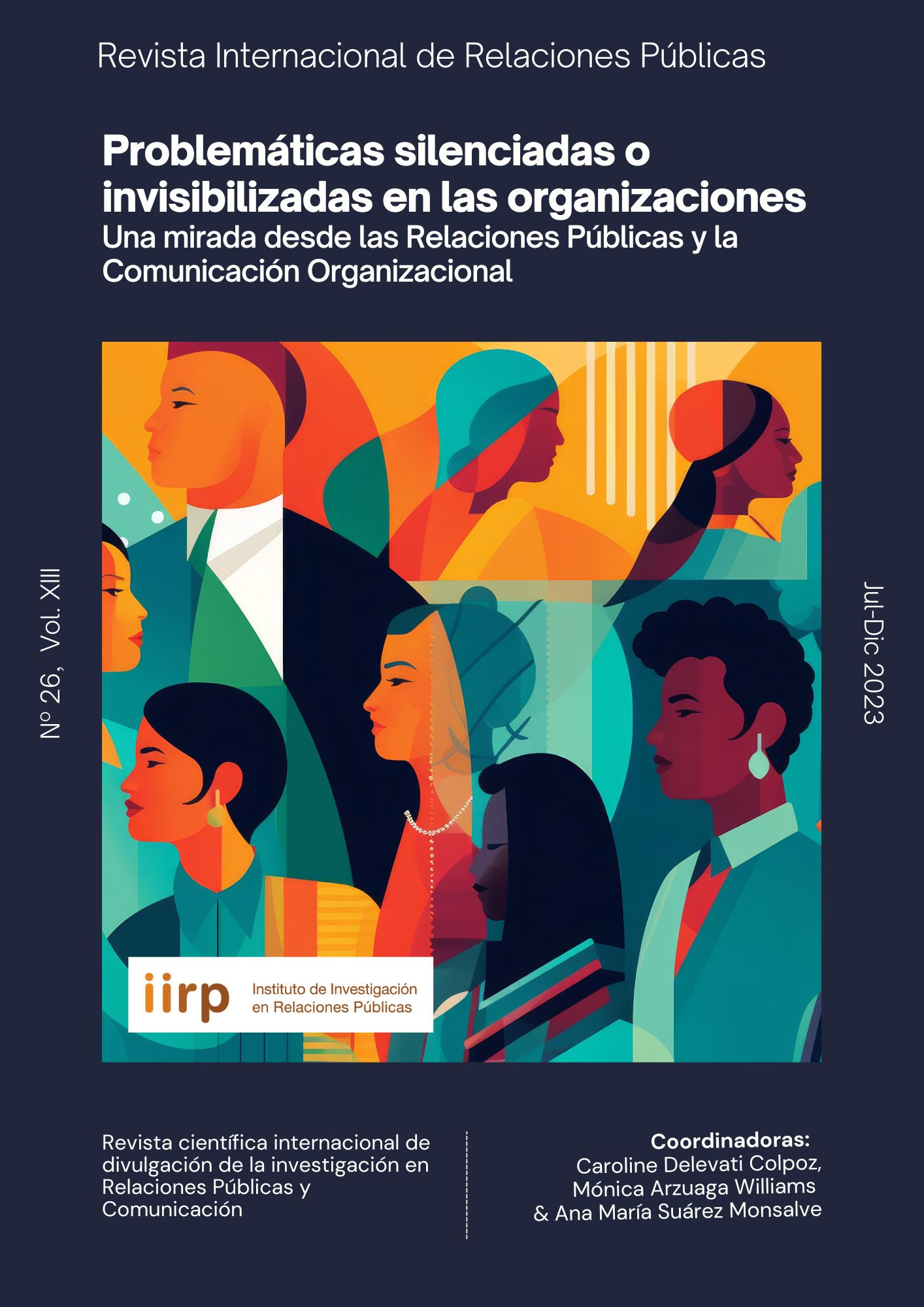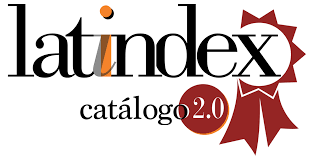When crisis makes you visible: The case of Metro S.A Corporate Reports
DOI:
https://doi.org/10.5783/revrrpp.v13i26.845Keywords:
corporate reports, relationship management, qualitative analysis, public relations, ChileAbstract
Corporate memory, traditionally perceived as a financial report tailored solely for shareholders, has evolved into a potent persuasive tool influencing public perceptions of businesses. This paradigm shift is especially relevant in the context of corporate governance, where it serves as a strategic communication vehicle for investors and stakeholders. This article explores the transformation of corporate memories in response to significant national events, such as the 2019 social upheaval and the COVID-19 pandemic, using the Chilean public-private transportation company, Metro S.A., as a case study.
The paper challenges the conventional view of corporate memory as a financial information instrument and, drawing on the narrative analysis approach, examines Metro S.A.'s corporate memories and integrated reports from 2016 to 2022. It aims to elucidate post-crisis communication changes, particularly in addressing previously marginalized stakeholders. The study incorporates a qualitative-interpretative analysis, focusing on key sections of Metro S.A.'s corporate memories to derive insights into the role of this communication tool in reshaping relationships with relevant stakeholders.
The theoretical framework, inspired by Lendingham and Bruning's five fundamental dimensions for effective organizational relationships, posits that the post-crisis corporate memories emphasize trust, openness, engagement, investment, and commitment. The article is structured into sections, beginning with an exploration of corporate memory's broader relational role. The subsequent section introduces the case of Metro S.A., followed by an explanation of the analytical methods employed. Results are then presented, and the discussion is contextualized within the theoretical framework, considering the limitations and conclusions.
The research employs a discursive analysis, examining Metro S.A.'s corporate and integrated memories from 2016 to 2022. The chosen period spans seven years, capturing the substantial language, content, tone, and design changes post-crisis. Using a case study methodology, the paper delves into paradigmatic cases, providing a nuanced understanding of the phenomenon under investigation.
The discourse analysis, utilising NVivo software for intentional qualitative coding, reveals significant shifts in communication post-2019 and 2020 crises. The results highlight three primary codes: the dual crisis as a challenge and opportunity, the transformation of key stakeholders from objects to active participants, and the emergence of previously invisible stakeholders as priorities.
The case study of Metro S.A., a public-private urban transportation entity, underscores the importance of redefining communication products like corporate memories. Traditionally viewed as unidirectional communication for financial audiences, these documents must evolve to engage with broader publics, especially for organizations with high public sensitivity. The article concludes that the communicative transformation expressed in Metro S.A.'s corporate memories signifies a shift towards harmonious dialogue with previously overlooked audiences, showcasing strategies to enhance the impact of social justice.
In conclusion, this study contributes to the discourse on organizational communication by emphasizing the role of corporate memories in reconfiguring relationships, fostering inclusivity, and addressing the impact on social justice, particularly in the aftermath of critical events.
Downloads
References
Adams, C. y Harte, G. (1998) Changing portrayal of the employment of women in British banks' and retail companies' corporate annual reports- Accounting, Organizations and Society, 23, (8), pp. 781-812. https://doi.org/10.1016/S0361-3682(98)00028-2
Adli S.N. y Chowdhury S. (2021). A Critical Review of Social Justice Theories in Public Transit Planning. Sustainability, 13(8):4289. https://doi.org/10.3390/su13084289
Araujo, K. (2019). Hilos tensados. Para leer el octubre chileno. Editorial USACH, Santiago.
Arnold, P. J. y Oakes, L. S. (1998). Accounting as discursive construction: the relationship between statement of financial accounting standards no. 106 and the dismantling of retiree health benefits. Accounting, Organizations and Society, 23 (2), 129-153. https://doi.org/10.1016/S0361-3682(97)00005-6
Amernic, J., Craig, R. y Tourish, D. (2007). The transformational leader as pedagogue, physician, architect, commander, and saint: Five root metaphors in Jack Welch’s letters to stockholders of General Electric. Human Relations, 60 (12), 1839-1872. https://doi.org/10.1177/0018726707084
Bachmann I., Valenzuela S. y Figueroa-Bustos, A. (2021). COVID-19 in Chile: a health crisis amidst a political crisis amidst a social crisis. En: van Aelst P and Blumler J (eds) Political Communication in the Time of Coronavirus. New York: Routledge, 48–64.
Bachman, I., y Labarca, C. (2023). The Local and the Global in Organizational Listening Amid an Evolving Media Landscape. En Katie R. Place ed: Organizational Listening for Strategic Communication: Building Theory and Practice. https://doi.org/10.4324/9781003273851
Bartlett, S. A. y Chandler, R. A. (1997). The corporate report and the private shareholder. The British Accounting Review, 29, 245–261. https://doi.org/10.1006/bare.1996.0044
Ben-Ner, A. y L. Putterman (2009). Trust, communication, and contract. Journal of Economic Behavior and Organization, 70(1-2). https://doi.org/10.1016/j.jebo.2009.01.011
Bajtin, M. (1982). Estética de la creación verbal. México. Siglo XX.
Benveniste, E (1977). Problemas de lingüística general. Vol. 1 . México, Siglo XXI.
Bournois, F., y Point, S. (2006). A letter from the president: Seduction, charm and obfuscation in french CEO letters. The Journal of Business Strategy, 27(6), 46. https://doi.org/10.1108/02756660610710355
Bruning, S. y Ledingham, J.A. (1998) Organization‐public relationships and consumer satisfaction: The role of relationships in the satisfaction mix, Communication Research Reports, 15:2, 198-208, https://doi.org/10.1080/08824099809362114
Campbell, David y Slack, Richard. (2008). Corporate “Philanthropy Strategy” and “Strategic Philanthropy. Some Insights from Voluntary Disclosures in Annual Reports”. Business & Society - BUS SOC. 47. 187-212. https://doi.org/10.1177/0007650306297941
Cardinaels, E., y van Veen-Dirks, P. M. G. (2010). Financial versus non-financial information: The impact of information organization and presentation in a Balanced Scorecard. Accounting, Organizations and Society, 35(6), 565–578. https://doi.org/10.1016/j.aos.2010.05.003
Davison, J. (2011). Barthesian perspectives on accounting communication and visual images of professional accountancy. Accounting, Auditing & Accountability Journal, 24 (2), 250-283. https://doi.org/10.1108/09513571111100708
Davison, J., y Warren, S. (2009). Imag [in] ing accounting and accountability. Accounting, Auditing & Accountability Journal, 22(6), 845. https://doi.org/10.1108/09513570910980436
De Simone, L. (2018). Consumo, Retail y Ciudad. Infraestructura de Retail y Producción Del Espacio Urbano En La Sociedad de Consumo. Caso de Chile. Tesis Doctoral, Pontificia Universidad Católica de Chile, 2018.
De Simone, L., y Pezoa, M. (2021). Urban shopping malls and Sustainability Approaches in Chilean Cities: Relations between Environmental Impacts of Buildings and Greenwashing Branding Discourses. Sustainability, 13(13), 7228. MDPI AG. http://dx.doi.org/10.3390/su13137228
Du Toit, E. (2017). The readability of integrated reports. Meditari Accountancy Research, 25(4), 629-653. https://doi.org/10.1108/MEDAR-07-2017-0165
Esendemirli, E. (2014). A Comparative Analysis of Disclosures in Annual Reports. Journal of Modern Accounting and Auditing, ISSN 1548-6583 April 2014, Vol. 10, No. 4, 414-424. https://doi.org/10.17265/1548-6583/2014.04.003
Freeman, R. E. (2010). Stakeholder theory: the state of the art. Cambridge, Cambridge University Press.
Gómez, P. (2009). Chile 2000-2006: La propuesta política del presidente Ricardo Lagos: Análisis Semiótico de los Mensajes a la Nación. Tesis doctoral. Facultad de Ciencias de la Información, Departamento de Periodismo, Universidad Complutense de Madrid.
Greene, M., Mora, R. I., Figueroa, C., Waintrub, N., y Ortúzar, J. D. D. (2017). Towards a sustainable city: Applying urban renewal incentives according to the social and urban characteristics of the area. Habitat International, 68, 15-23. https://doi.org/10.1016/j.habitatint.2017.03.004
Grove, M. (2012). Revealing corporate identities in annual reports. Corporate Communications: An International Journal 17 (3) 2012: 379-403. https://doi.org/10.1108/13563281211253593
Judd, V.C. y Tims, B. (1991). How Annual Reports Communicate a Customer Orientation. Industrial Marketing Management 20.4 (1991): 353-60. https://doi.org/10.1016/0019-8501(91)90011-4 .
Kent, M. L., y Taylor, M. (2002). Toward a dialogic theory of public relations. Public relations review, 28(1), 21-37. https://doi.org/10.1016/S0363-8111(02)00108-X
Labarca, C. (2014). Estrategias de Comunicación entre actores no estatales como factor de confianza en las relaciones internacionales: el caso de la República Popular China y Chile 2014-2017, Fondecyt N 11140393.
Labarca, C., & Mujica, C. (2022). Trust as a contextual variable for public relations: Reflections from Latin America. Public Relations Inquiry, 11(2), 315-330. https://doi.org/10.1177/2046147X221081172
Labarca, C., Valenzuela, S., Bachmann, I., & Grassau, D. (2022). Medios de comunicación y confianza política en América Latina: análisis individual y contextual del rol de las noticias en la confianza en el gobierno y el Estado. Revista Internacional De Sociología, 80(4), e216. https://doi.org/10.3989/ris.2022.80.4.M22-01
Ledingham, J. A. y Bruning, S. (1998). Relationship management in public relations: dimensions of an organization-public relationship. Public Relations Review. 24 (1): 55-65. https://doi.org/10.1016/S0363-8111(98)80020-9
Ledingham, John. (2003), Explicating Relationship Management as a General Theory of Public Relations. Journal of Public Relations Research. Vol. 15, no. 2, pp. 181–198. https://doi.org/10.1016/S0363-8111(98)80020-9.
Ledingham, J. A., y Bruning, S. D. (2000). Public relations as relationship management: A relational approach to the study and practice of public relations. Routledge.
Ledingham, J. A. (2009). A chronology of organization-stakeholder relationships with recommendations concerning practitioner adoption of the relational perspective. Journal of Promotion Management, 14(3-4), 243-262. https://doi.org/10.1080/10496490802637846
Macnamara, J. (2016). Organizational listening: Addressing a major gap in public relations theory and practice. Journal of Public Relations Research, 28(3-4), 146-169. https://doi.org/10.1080/1062726X.2016.1228064
Maingueneau, D. (1980). Introducción a los métodos de análisis del discurso: Problemas y Perspectivas. Paris, Hachette.
Márquez, F., (2020). Anthropology and Chile’s Estallido Social. American Anthropologist. 122 (3), 667–675. https://doi.org/10.1111/aman.13431
Mattes, R. y A. Moreno. 2018. “Social and political trust in developing countries: Sub-Saharan Africa and Latin America”. pp. 357-381 Oxford handbook of social and political trust, editado por E. M. Uslaner. Oxford, UK: Oxford University Press.
Ministerio de Transportes y Telecomunicaciones de Chile (2020). Informe de Gestión 2020 Directorio de Transporte Público Metropolitano.
Mobasher, A., Ali, A.M., Abdullah, F.S., y Yuit, C.M. (2013). Review of studies on corporate annual reports during 1990-2012. International Journal of Applied Linguistics and English Literature, 2(2), 133-141. https://doi.org/10.7575/aiac.ijalel.v.2n.2p.133
Olsson, B. (2001). Annual reporting practices: information about human resources in corporate annual reports in major Swedish companies. Journal Human Resource Costing Acc 2001;6(1):39–52. https://doi.org/10.1108/eb029071
Peñamarín (1997). El análisis de los textos en una nueva clave. Discursos e imágenes sobre la inmigración en El País. Revista CIC 145- 188. Facultad de Ciencias de la Información, Universidad Complutense de Madrid. https://revistas.ucm.es/index.php/CIYC/article/view/CIYC9797110145A
Piekkari, R., Welch, K. y Paavilainen, E. 2008. The Case Study as Disciplinary Convention: Evidence from International Business Journals. Organizational Research Methods. Volume: 12 issue: 3, page(s): 567-589. https://doi.org/10.1177/1094428108319905
Rahm, H., Sandell, N., y Svensson, P. (2019). Corporate dreams – appropriate aspirations and the building of trust in annual reports. Studies in Communication Sciences. http://lup.lub.lu.se/record/c3717961-73c9-46d0-bee6-49021bbd1121.
Rahm, H. y Sandell, N. (2016). Att legitimera priset på förvärvat företag Intertextuella förhållanden i goodwillformuleringar I: Tidskriften Sakprosa Band 8, nr 3. https://doi.org/10.5617/sakprosa.3614
Rocci, A, Palmieri, R. y Gautier, I. (Eds.) (2015). Text and discourse analysis in financial communication. Studies in Communication Science 15(1) 2-132. https://shs.hal.science/halshs-01628927
Stanton, P., y Stanton, J. (2002). Corporate annual reports: research perspectives used. Accounting, Auditing & Accountability Journal, 15(4), 478-500. https://doi.org/10.1108/09513570210440568/
Yin, R. (1981). The Case Study Crisis: Some Answers. Administrative Science Quarterly, 26(1), 58-65. https://doi.org/10.2307/2392599
Yin, R. (2008). Case Study Research: Design and Methods, Fourth Edition, Applied Social Research Methods Volume 5, Sage.
Downloads
Published
How to Cite
Issue
Section
License
Copyright (c) 2023 Claudia Labarca, Liliana De Simone

This work is licensed under a Creative Commons Attribution-NonCommercial-NoDerivatives 4.0 International License.
Authors publishing in this journal agree to the following terms:
a. Authors retain copyright and grant the journal the right to be the first publication of the work as licensed under a Creative Commons Attribution License that allows others to share the work with an acknowledgement of authorship of the work and initial publication in this journal.
b. Authors may separately enter into additional arrangements for non-exclusive distribution of the version of the work published in the journal (e.g., placing it in an institutional repository or publishing it in a book), with an acknowledgement of initial publication in this journal.
c. Authors are allowed and encouraged to disseminate their work electronically (e.g. in institutional repositories or on their own website) before and during the submission process, as it can lead to productive exchanges, as well as earlier and higher citation of published work (see The Effect of Open Access).





